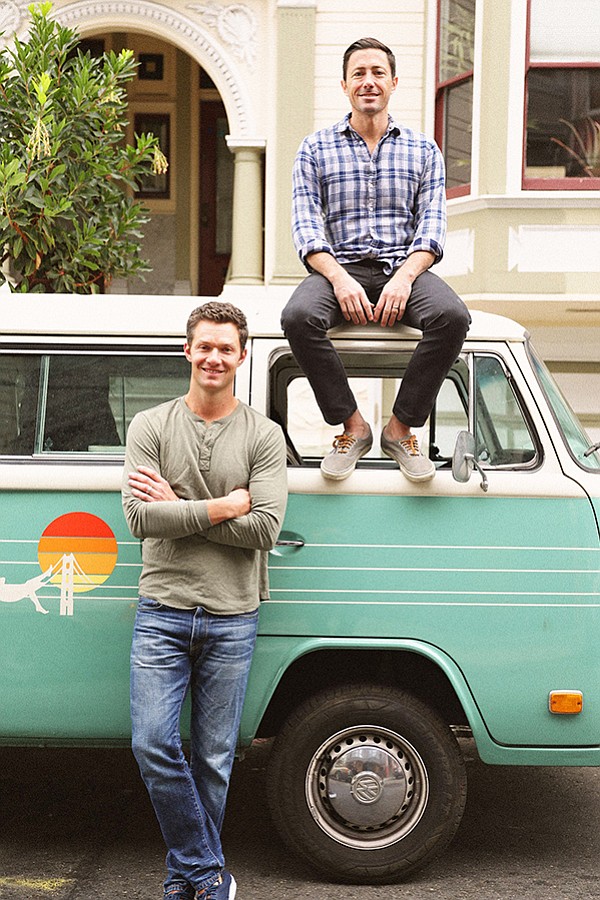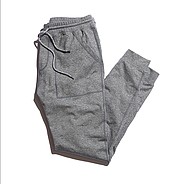Marine Layer Suits Up With Activewear Line Weekend Sport
Weekend Sport
As of Thursday, May 2, 2019
Anyone can see that the San Francisco label Marine Layer emphasizes comfort with a carefree California lifestyle in mind.
One of its graphics is a logo of a giant hammock hanging from the Golden Gate Bridge. Brand founder Michael Natenshon often talks about how his company makes the softest T-shirts on the market.
Last month, Marine Layer decided to branch out into activewear by introducing Weekend Sport. The new collection mixes performance fabrics with Marine Layer’s lightly faded colors, retro 1970s-style graphics and an embrace of soft fabrics, Natenshon said.
“We’re all about making what you want to wear during the weekends,” he said. “Our customer is active. We want to make complementary pieces—coffee in the morning, then a hike.”
When approaching this market, Natenshon thought it was crucial to provide a difference. The brand designed an activewear line in late 2014 but decided against releasing it widely because the line didn’t have enough points of difference.
Maybe he had read Matt Powell, a sports retail analyst who in January wrote in a blog for activewear market researchers at The NPD Group that “a lack of new items or looks for apparel will also dampen results.”
On the second try, Natenshon said, his company developed a technical fabric made from soft fabric. It wicks away moisture, provides four-way stretch and, for its design, bears retro-inspired striped details. “It’s not generic sportswear,” he said. “We are doing details in a way that is fresh in the market. We have a distinctive vibe.”
The company makes its knits in the United States and manufactures its technical fabrics overseas.
Looks for men include tailored sweatpants with drawstrings. There’s a hoodie, sport shorts, T-shirts, short-sleeve sweatshirts and a long-sleeve crew shirt made of lightweight active fabric bearing the logo of the Los Angeles nonprofit group Protect Our Winters, which advocates for protecting the environment from climate change. For each shirt sold, $15 goes to Protect Our Winters.
Looks for women include leggings in colors including black and navy, jogging pants, zip-up track jackets, zip-up hoodies and racer-back tank tops. Retail price points for women’s styles range from $44 for tank tops to $135 for a track jacket.
Marine Layer is sold on the company’s website (www.marinelayer.com), but the company is a vertical retailer and currently has more than 30 bricks-and-mortar stores.
Twelve of those stores are in California, mostly located on retail streets and in buildings that have a unique look. The interior of each Marine Layer store is different with the retailer building all its store fixtures in-house.
Store fixtures are inspired by the surrounding city. In a few of the stores, such as Chicago and Portland, Ore., the retailer has built Airbnb rentals. Natenshon claimed that the Airbnbs are busy and have been rented 320 days of the year. The company put together the Airbnbs for the fun of it, but there is no interest in getting deeper into the hospitality business.
“People have predicted the end of retail for years. It is just silly,” said Natenshon, who plans to open five to 10 more stores this year. “We believe simply that shopping in stores is something that customers like doing. They will continue doing it. There’s a ton of folks who shop online. We do a huge business there as well. People enjoy that experience. Ultimately, we want to give our customers options and make any shopping experience with us unique and enjoyable. Retail is not going anywhere.”
Next up for Marine Layer, the brand will produce a denim line that Natenshon hopes will be ready for Fall. Like the activewear line, he said that the company would take its time to get the line right.

